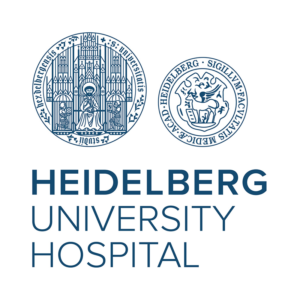Understanding mass casualty incidents (MCI)
The occurrence of external emergencies with a large number of casualties is known in the medical field as a mass casualty incident (MCI). Whether in the form of train accidents, NBC emergencies, or in connection with terrorist attacks – a large number of injured people require special procedures that differ significantly from individual medicine due to the scarcity of resources. To ensure that staff is sufficiently qualified to act in such extreme situations, the special plans and procedures for such scenarios must be regularly trained.
In November 2023, Heidelberg University Hospital planned and carried out such a large-scale exercise in the new surgery building. The exercise aimed to find out how long it takes from the arrival of patients to actual treatment and what the process looks like in practice until then. The knowledge gained from the exercise will then be used to optimise processes throughout Europe.
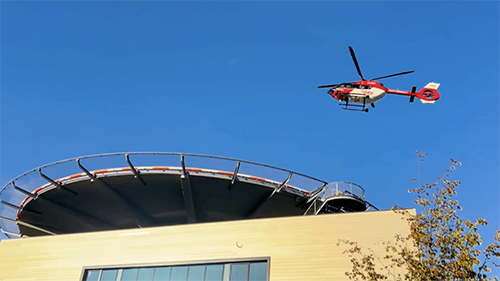

Simulating a realistic emergency scenario
The exercise scenario: An explosion in a company building caused by heating repairs. Within two hours, 100 mostly seriously injured patients (impersonated by actors) arrived at Heidelberg University Hospital. With 140 employees of the hospital as well as forces from the fire brigade, the German Red Cross, disaster control, the German Armed Forces, and many more, the procedures in such a disaster scenario were rehearsed as realistically as possible.
From alerting all the necessary emergency services and medical staff to the coordination and documentation of procedures to the rapid and adequate care of patients – the MCI concept had to be put from paper into practice. To draw the right conclusions from the extremely realistic exercise and identify points in the process that could be improved, the stress level of the medical staff was to be measured using biosensors. On the other hand, the aim was to track and record the locations and routes of staff and “patients” in real time.
Innovative tracking technology for emergency exercises
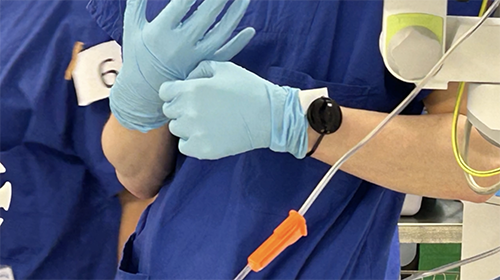
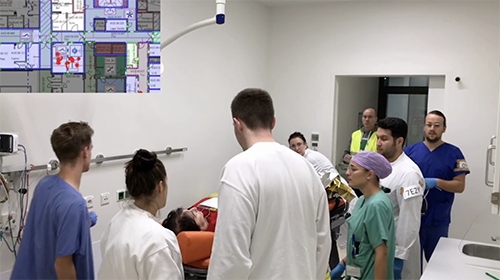
To record and later analyse the positions and routes of the people involved in the exercise, Favendo equipped the UKHD’s New Surgery building with a Quuppa tracker infrastructure. From patient admission to the treatment and operating theatres, Q17 Locators were installed to track exactly where people were staying and/or moving and for how long, down to the sub-metre.
Patients were equipped with Quuppa tags for localisation before the exercise began. The same goes for the hospital staff. When the ambulances arrived in front of the hospital building, the tag IDs were scanned using smartphone cameras and the Favendo Tagger software. The preliminary triage status of the patients was also recorded here. Thanks to the web-based software, handling was very simple and did not require any additional hardware. Once inside the building, the positions of patients and staff were then recorded anonymously and in real-time so that the data could later be used for optimisation purposes.
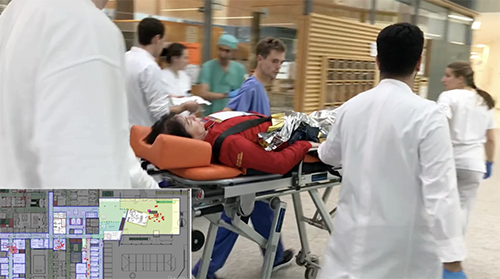
Key findings and Process Improvements
The scan processes were used to record the time stamp of the patient’s arrival at the hospital. In retrospect, it can be reconstructed for each patient exactly how long it took from the accident to admission and then again to treatment. This allows conclusions to be drawn about the care situation of a hospital in emergencies.
In addition to the time stamps, all position data was also recorded during the exercise. As pure geodata, but also visually in the Quuppa Data Player. Thanks to the geolocalisation, those responsible were able to identify bottlenecks and unclear processes during the exercise.
The video format makes it possible to analyse routes and junctions on the hospital floor plan retrospectively. This can also be used to identify possible incorrect positioning of treatment areas or bottlenecks in patient care. In addition, the recorded movement data can be subsequently enriched with further recorded data (e.g. which tags belong to medical or nursing staff).
In addition to the position data, the data from the biosensors for the stress level is also included in the analysis. Conclusions about the group dynamics within the treatment teams are possible by combining both data. Thanks to real-time localisation, the MCI exercise not only enabled practical training of hand movements and procedures but also provided new insights.
For more information, visit favendo.com.

